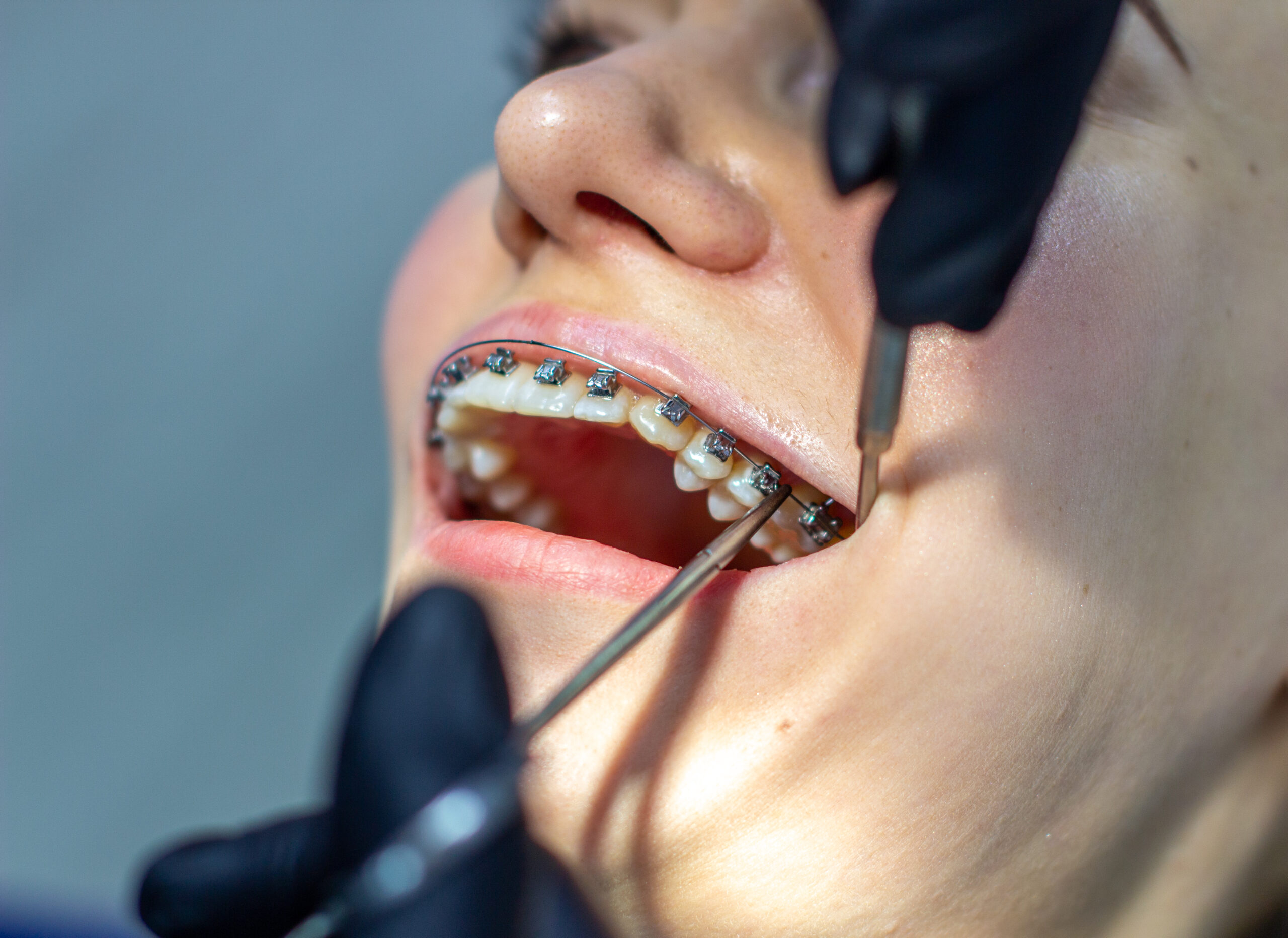Call: (810) 674-3060
Can Braces Change The Shape Of Your Face?

Braces are orthodontic devices designed to straighten teeth and correct bite issues. Their primary purpose is to improve dental alignment, enhancing both function and aesthetics. However, beyond their intended goal, braces can also lead to a subtle change in the shape of your face. These changes often result from the improved alignment of teeth and jaws, positively impacting facial symmetry and proportions. Thus, while braces primarily target dental alignment, their effects can extend to enhancing overall facial appearance as a secondary benefit of treatment.
Understanding Braces
Braces are orthodontic appliances used to straighten teeth and correct misalignments of the jaw. They consist of brackets bonded to the teeth and wires that exert gentle pressure to move the teeth into proper alignment.
Several types of braces are available, catering to different preferences and needs. Traditional metal braces are the most common, featuring stainless steel brackets and wires. Clear aligners, such as Invisalign, are transparent plastic trays that gradually shift teeth into place, offering a more discreet option.
People seek braces for various reasons, including crooked teeth, overcrowding, and bite issues like overbite, underbite, or crossbite. These conditions can impact dental health, aesthetics, and overall oral function, motivating individuals to undergo orthodontic treatment.
The Relationship Between Teeth and Face Shape
The relationship between teeth and face shape is intricate and often overlooked. The positioning and alignment of teeth can significantly impact the overall appearance of the face. When teeth are properly aligned, they support the structure of the jaw and contribute to facial symmetry and proportionality.
Straight teeth can create a more harmonious balance within the face, enhancing features like the lips, cheeks, and chin. Conversely, misaligned teeth or bite issues can affect facial aesthetics, leading to asymmetry or disproportionate features.
Additionally, braces, by correcting dental alignment, can change the shape of your face. Improved alignment can positively influence jaw positioning, potentially enhancing facial contours and proportions. Thus, orthodontic treatment not only addresses dental issues but also contributes to overall facial aesthetics and harmony.
Effects of Braces on the Shape of Your Face
1. Improved Jaw Alignment: Braces can correct misaligned teeth and bite issues, leading to better alignment of the jaws. This can result in a more symmetrical and balanced facial structure as the jaws settle into their proper positions.
2. Enhanced Facial Proportions: Straightening teeth with braces can improve the relationship between the upper and lower jaws, leading to a more proportionate facial appearance. This can contribute to a harmonious balance between features such as the nose, lips, and chin.
3. Widening of Smile: Braces can align crowded or crooked teeth, creating space and allowing for a broader smile. A wider smile can give the appearance of a fuller face and contribute to a more youthful and attractive overall look.
4. Improved Lip Support: Properly aligned teeth can provide better support for the lips, resulting in a more defined lip contour and reducing the appearance of thin or uneven lips. This can enhance facial symmetry and attractiveness.
5. Facial Rejuvenation: In some cases, correcting dental alignment with braces can subtly lift facial tissues, resulting in a more youthful and rejuvenated appearance. This effect is particularly noticeable in individuals with significant dental misalignments or bite issues.
Other Factors Influencing Facial Shape
1. Bone Structure: The underlying bone structure of the face, including the size and shape of the jaw, cheekbones, and forehead, plays a significant role in determining facial shape. Genetics largely determine bone structure, which can vary widely among individuals.
2. Muscle Tone: The tone and strength of facial muscles can influence facial shape. Well-developed muscles can contribute to a more defined jawline and cheekbones, while weak muscles may result in a softer or less sculpted appearance.
3. Fat Distribution: The distribution of fat deposits throughout the face can affect facial contours. Factors such as age, genetics, and lifestyle can impact fat distribution, leading to variations in facial fullness and shape.
4. Skin Elasticity: The elasticity and firmness of the skin influence how it drapes over the underlying facial structures. Loss of skin elasticity due to aging or environmental factors can contribute to sagging or drooping of facial tissues, altering facial shape over time.
5. Lifestyle Habits: Habits such as smoking, sun exposure, and diet can affect facial shape and appearance. Smoking, for example, can accelerate the breakdown of collagen and elastin in the skin, leading to premature aging and changes in facial contours. Similarly, a diet high in processed foods and sugars may contribute to inflammation and fluid retention, affecting facial fullness and shape.
Final Words!
In conclusion, we’ve explored the multifaceted relationship between braces, dental alignment, and facial aesthetics. Braces not only straighten teeth but can subtly enhance and change the shape of your face by improving jaw alignment, widening smiles, and providing better lip support. However, other factors such as bone structure, muscle tone, fat distribution, and lifestyle habits also influence facial shape. So, while braces can contribute positively to facial aesthetics, they are just one aspect to consider. For personalized advice on braces and facial aesthetics, consult with the Orthodontics Dentist In Burton today. Take the first step towards your best smile! Schedule your consultation now.




